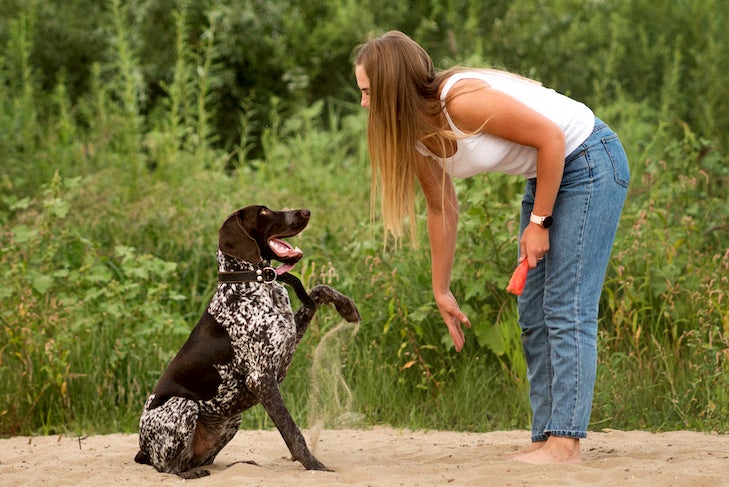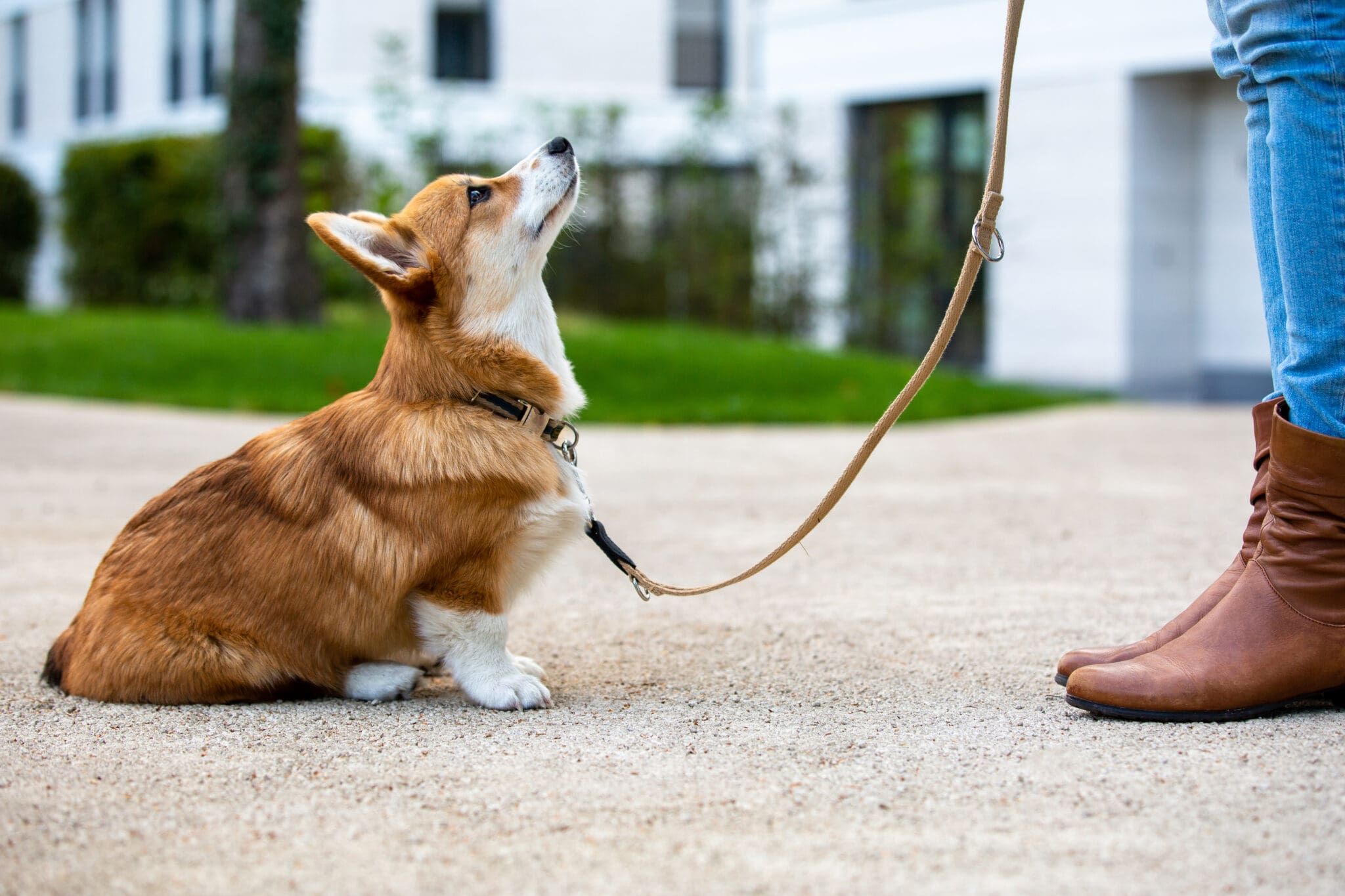Top Dog Training Techniques Every Owner Should Know

Favorable Reinforcement Techniques
Utilizing favorable support techniques is necessary for efficient dog training, as it cultivates a relying on bond in between the trainer and the pet. This method concentrates on fulfilling desirable behaviors instead than punishing unwanted ones, developing an environment helpful to learning. Benefits can include treats, praise, or play, which motivate dogs to duplicate the habits that make them these benefits.

Moreover, this approach enhances the dog's interest for training sessions. They are extra engaged and receptive when pet dogs link training with positive experiences. Dog training. Beyond prompt therapy, positive support motivates a collaborative relationship between the canine and trainer, decreasing stress and anxiety and fear
To maximize effectiveness, it is essential to provide incentives quickly, guaranteeing the pet dog links the behavior with the reinforcement. In essence, positive reinforcement methods not only yield better-trained pets but likewise advertise an unified collaboration between pet dog and owner.
Clicker Training Technique
The remote control training technique is an extremely reliable technique that builds upon the concepts of positive reinforcement by including an unique noise to mark preferred actions. This technique uses a small handheld tool that generates a clicking sound, allowing fitness instructors to connect with their dogs in a instant and clear way. When a dog executes an actions that the owner wishes to motivate, the clicker is turned on, adhered to by an incentive, usually in the type of deals with or appreciation.
The key to successful clicker training exists in uniformity and timing. It is important to click at the specific moment the wanted actions occurs, guaranteeing that the pet dog links the sound with the action and the subsequent reward. This technique not just improves communication but likewise fosters a more powerful bond between the pet dog and the owner, as it motivates involvement and communication throughout training sessions.
Remote control training can be put on a selection of commands and actions, from standard obedience to much more complex methods. Its convenience and performance make it a preferred method among expert trainers and pet owners alike, leading the way for a trained and receptive canine friend.
Leash Training Essentials
Reliable chain training is important for ensuring a safe and delightful walking experience for both pet dogs and their proprietors. Dog training. Chain training need to begin early and be come close to with persistence and consistency. Begin by selecting an appropriate leash and collar or harness. A flat collar may function for some pets, while others may gain from a harness that lowers pulling.
Present your canine to the leash gradually, permitting them to explore it in a comfy atmosphere. Once they are accustomed, practice loose-leash strolling. This involves gratifying your canine for walking close to you rather than pulling ahead. Usage treats and appreciation to enhance wanted habits, and make sure to continue to be assertive and tranquil.
If your pet dog starts to pull, Get More Information stop walking promptly. Wait till they go back to your side before resuming. This educates them that pulling does not result in advance. Additionally, technique various walking environments to assist your canine adapt to interruptions.
Routine technique will certainly solidify your dog's understanding of chain etiquette. Keep in mind that leash training his explanation is a recurring procedure; perseverance and consistency will yield the ideal results, fostering a positive experience for both you and your canine friend.
Socializing Methods
Socialization is an essential aspect of canine training that must preferably start throughout puppyhood but can be helpful at any type of age. Effective socializing helps pet dogs create confidence and lowers the probability of behavior problems. To execute successful socialization techniques, reveal your canine to a selection of settings, individuals, and other pets.
Begin with controlled settings, such as young puppy classes or arranged playgroups, where young dogs can engage safely. Progressively introduce your pet to new experiences, consisting of different sounds, surface areas, and activities. Make certain these experiences are fulfilling and favorable to establish a complacency.
For adult pets or those lacking direct exposure, start with low-stress situations. Short, positive communications with pleasant human beings and calm canines can develop favorable organizations. Utilize deals with and praise to strengthen desirable behaviors throughout these experiences.

Uniformity and Perseverance
Acknowledging the value of consistency and patience in canine training is essential for accomplishing enduring results. Irregular training can lead to complication, making it challenging for the pet dog to understand actions or commands, inevitably hindering progression.
In addition, patience is a crucial element of reliable training. Dogs, like humans, discover at their own speed. Some may realize concepts rapidly, while others might take longer. It is essential for proprietors to continue to be tranquil and supportive, enhancing positive actions without resorting to disappointment or penalty. This promotes a trusting partnership in between the pet and proprietor, motivating a more enthusiastic and eager learner.
To cultivate consistency and patience, develop a regular training regular, use the same read commands, and make certain that all member of the family apply the exact same training concepts - Dog training. By doing so, you develop a steady environment for finding out, enabling your dog to prosper and establish right into a well-behaved companion
Final Thought
Finally, reliable canine training strategies, such as favorable reinforcement, clicker training, and correct leash training, are essential for promoting a healthy and balanced owner-dog connection. Furthermore, implementing socializing strategies and preserving uniformity and perseverance throughout the training process adds substantially to a pet dog's general wellness. By integrating these techniques, dog owners can facilitate the growth of well-adjusted, obedient pet dogs, eventually enhancing the lifestyle for both the owner and the dog.
Among the most prominent approaches are favorable support, remote control training, and leash training, each offering special benefits that add to a mannerly pet. As we check out these fundamental strategies, it ends up being evident that understanding their nuances can dramatically influence the training experience and the pet dog's general actions.Using positive reinforcement strategies is important for efficient pet training, as it promotes a trusting bond between the fitness instructor and the pet dog.In conclusion, reliable canine training techniques, such as favorable reinforcement, clicker training, and appropriate chain training, are crucial for fostering a healthy and balanced owner-dog partnership. By integrating these techniques, pet dog owners can facilitate the development of well-adjusted, obedient pets, eventually enhancing the high quality of life for both the pet dog and the proprietor.